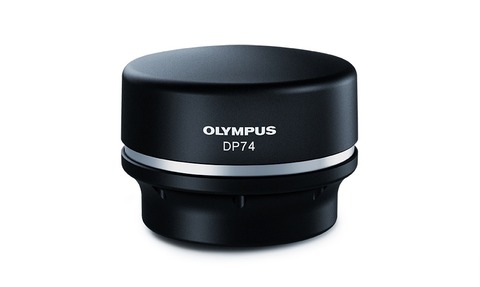
Olympus’ DP74 microscopy camera is designed to enhance return on investment by efficiently delivering sensitive fluorescence and brightfield imaging in one camera.
Features include a 'Position Navigator' to automatically track the position on the sample, a time-saving anti-whiteout function, and noise reduction for low-light fluorescence signals. These capabilities help to push the boundaries of any microscope, making the DP74 a truly enabling camera, highly suited for both research and routine use.
While lower frame rates can slow down everyday operations such as panning and focusing, the DP74’s 60 fps is aimed at delivering an experience that is similar to looking through the oculars. This not only enables enhanced comfort at the microscope by reducing reliance on the oculars, but also facilitates on-screen discussion and collaboration, for both small and big audiences.
The camera is designed to image at a high sensitivity in both brightfield and fluorescence applications, making it suitable for a wide range of life science applications, particularly where samples with different types of staining are used on the same microscope. Its LiveHR function may help to improve the workflow of industrial applications, as challenging samples with a highly variable brightness can be clearly visualised in the live image.
Further features include 'Position Navigator', which enables the camera to understand and remember structures on the sample and allows the creation of a sample map in real-time by simply moving the manual stage. No expensive encoded or motorised stages are required. An anti-whiteout function quickly restores the live image, saving many seconds each time an objective is changed
When working on low-emitting fluorescent samples, the DP74 automatically recognises a challenging illumination situation and applies an active noise reduction function. This results in a fast live image while searching for the field of interest, even when long exposure times are required, and a clean snapshot as soon as the image is stationary again.






